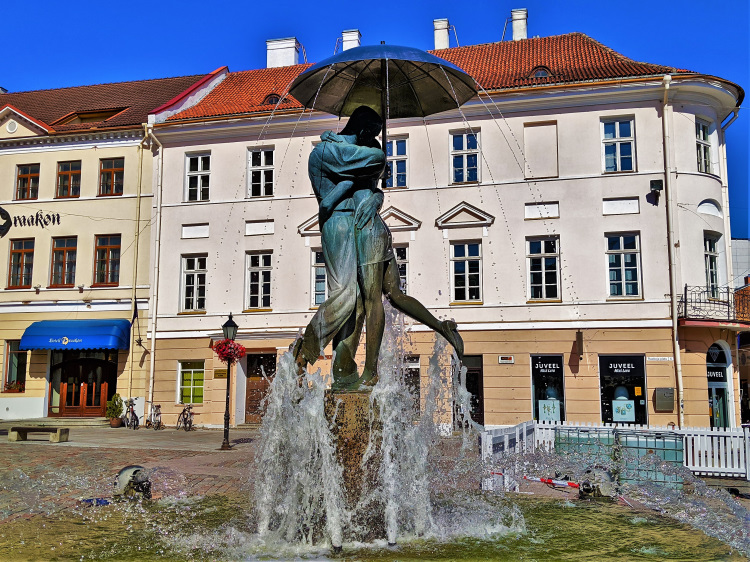

Getting measurements for his epic endevor
Construction of the University of Tartu’s Old Observatory started in 1808 and had the largest refracting telescope at the time. Starting in 1813, Friedrich Georg Wilhelm von Struve worked here and in 1820 he became a professor and director of the observatory. He studied double stars and was the first to measure the exact distance to a star, Vega.
 He also created the Struve Geodetic Arc between 1816 and 1855, which is a World Heritage Site spread over 10 countries (the most of any WHS). The Struve Geodetic Arc is a chain of survey triangulations stretching from Hammerfest in Norway to the Black Sea which yielded the first accurate measurement of a meridian, establish the exact size (he was within 200 meters of perfect), and shape of the earth (he proved the earth was flatter at the poles and bulged at the equator). At the time of his work, the chain only passed through two countries. The Union of Sweden-Norway and the Russian Empire.
He also created the Struve Geodetic Arc between 1816 and 1855, which is a World Heritage Site spread over 10 countries (the most of any WHS). The Struve Geodetic Arc is a chain of survey triangulations stretching from Hammerfest in Norway to the Black Sea which yielded the first accurate measurement of a meridian, establish the exact size (he was within 200 meters of perfect), and shape of the earth (he proved the earth was flatter at the poles and bulged at the equator). At the time of his work, the chain only passed through two countries. The Union of Sweden-Norway and the Russian Empire.

One of two sites I saw in Lithuania that he took measurements from
Tartu’s Old Observatory is where Struve conducted much of his research and is one of the best place to view this World Heritage Site since most of the other 34 sites are simply commemorative plaques or built obelisks. This is out of the original 265 main station points he used.
